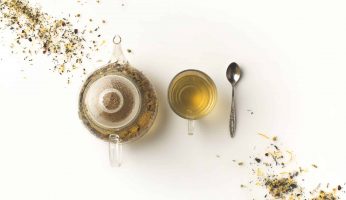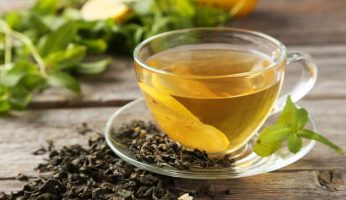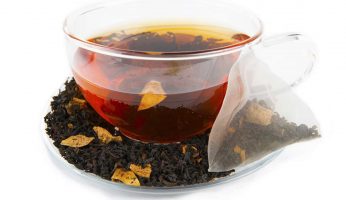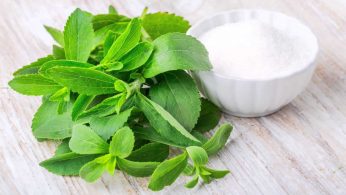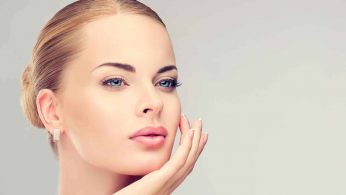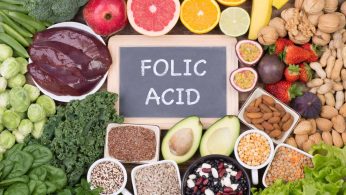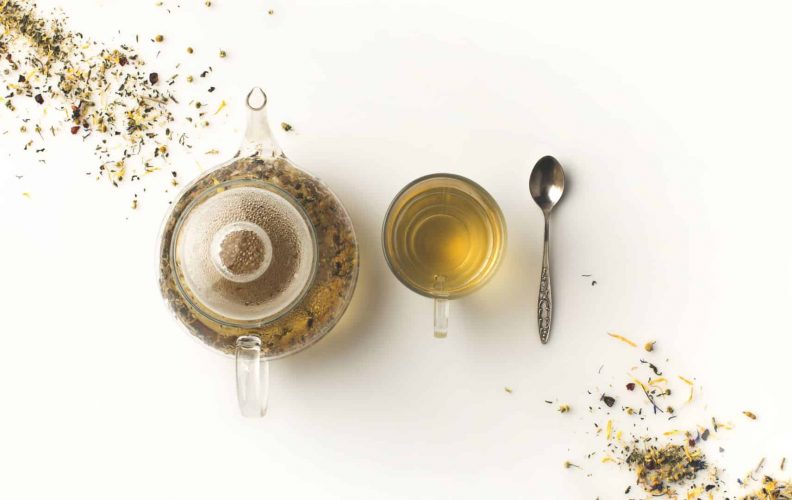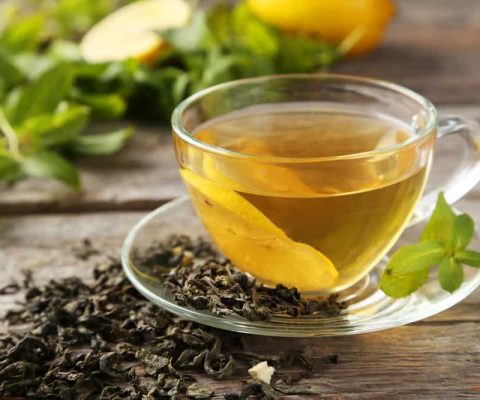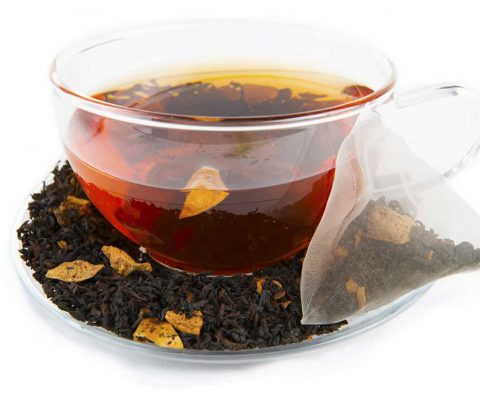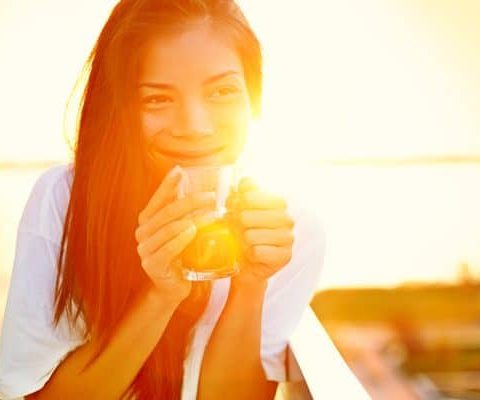Caffeine in Black Tea
Disclosure: We use affiliate links and may receive a small commission on purchases.
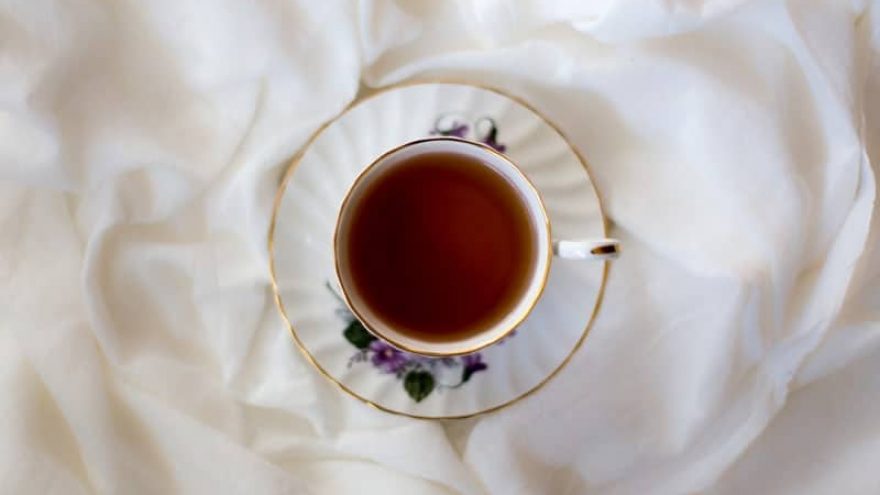 Caffeine in Black Tea
thefitbay.com
Caffeine in Black Tea
thefitbay.com
Research reported that 85 percent of Americans consume, every day, at least one drink containing caffeine (1). Tea remains a popular caffeinated drink, black tea representing 84 percent of all teas consumed (2). It contains a significant amount of caffeine, making it a good substitute for your morning coffee boost.
If you’re wondering what makes the best black tea brand, we’ve detailed all elements to take into account. Tea leaves’ maturity and size, processing method, grade, and steeping time all affect caffeine dosage in a black tea.
Caffeine in Black Tea
Does black tea have caffeine? All teas come from the same plant—Camellia Sinensis—and, therefore, all contain some of this stimulating substance. Among all tea types, black tea has the highest amount—between 40 and 70 mg per 8-ounce cup.
If this number doesn’t mean much to you, here are some comparisons. Green teas come with 35 to 45 mg of caffeine, and you’ll typically find 15 to 30 mg in white teas. Oolong type, which has its own category, contains 37 to 55 mg per serving.
Even decaffeinated black tea carries 2 mg of caffeine per cup (3). Only herbal teas don’t contain any at all.
Black Tea Caffeine vs Coffee
Although both drinks can be energy-boosting, both the amount of caffeine and its effect on the body differs.
Tea Is More Gentle
Black tea doesn’t win the contest, compared to coffee. Indeed, a brewed coffee provides 96 mg of caffeine in the same 8-ounce cup. That’s double the amount of the average black tea caffeine content.
How much caffeine is in coffee can vary from brand to brand, and reach 200 mg of it per serving. Because it’s a wide range, and for a proper comparison, you need to account for the type of coffee you’re drinking.
Brewed types contain the most caffeine. Instant coffee and espresso aren’t as stimulating, holding 65-100 mg and 100-150 mg, respectively. As for decaffeinated coffees and black teas, they provide the same amount of the substance.
Summary: Black Tea vs Coffee Caffeine
The weakest coffee typically has more caffeine than the strongest black tea. Yet, amounts can significantly vary based on the processing and preparation styles.
Tea Provides More Stable Energy
Not only does coffee generally contain more caffeine than most teas, but the physiological effects also differ. If you’ve ever had a cup of coffee, you’ve likely noticed how fast it gets to the bloodstream, giving you that extra energy. Yet, after a few hours, you may sense a “crash” feeling, which is when we usually reach for another cup.
Caffeine in tea works differently. It attaches to the compound L-theanine to produce a more gentle effect. Instead of the fast burst of power coffee provides, black tea allows a longer and more stable boost of energy.
In addition, this combination of caffeine and L-theanine allows better focus and alertness (4). This can come in handy when heading to work.
Factors Affecting Tea Caffeine Content
Its stimulating power can significantly vary from one drink to another. Here are the main factors affecting caffeine levels.
- Tea tree leaves.
- Black tea grades.
- Early Grey vs English Breakfast teas.
- Hybrid black teas.
- Steeping time.
Tea Tree Leaves
How much caffeine in a cup of black tea? The leaves play a significant role in how strong your tea turns out.
Young Leaves
Young tea leaves contain more caffeine. This is why green and white tea can sometimes be more stimulating than some black teas. To make more tonic products, some brands add fresher buds.
Tea leaves harvested in early spring are stronger than if picked later in the season. They should also make your drink less bitter with a slightly sweeter taste.
Are you wondering how to identify young leaves from more mature ones? Look for a golden color. Darker leaves are generally picked later in the year.
Part of the Plant Used
Even within the same tree, the amount of caffeine varies. It depends on the part of the plant that is being used during processing. Generally speaking, the higher up the plant, the better.
Buds typically contain the most caffeine—6.3 mg—and are used in the highest quality black teas. Read further to learn about black tea grades. On the other hand, the first leaf—the topmost part of the plant—carries 4.6 mg of caffeine.
Caffeine content then decreases to 2.7 mg inside the fourth leaf, and only 2 mg inside the stalk. For the most stimulating black tea, choose a reputable brand providing detailed information on which part of the plant is used during the manufacturing process.
Black Tea Grades
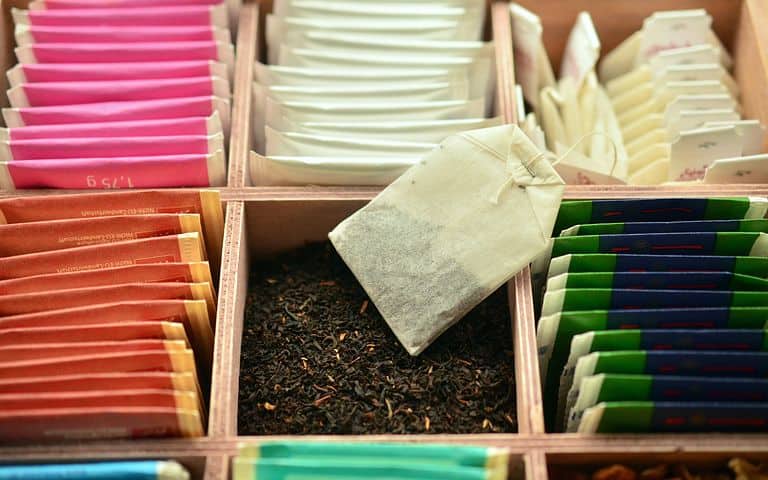
If you’re unsure how to spot a strong tea, the following classification should help you. Black teas are categorized in grades according to the leaves’ shape and quality.
Bear in mind, however, that this classification isn’t standardized and may differ from country to country. Nevertheless, it remains a good indication of the product’s quality. Here are the main grades to look out for:
Whole Leaf Grades
Black teas with whole leaves follow the orthodox producing method. They generally provide the best favor and are the least processed black teas. This also means that leaves aren’t fully oxidized with weaker caffeine dosage.
If you’re looking for a low-stimulating black tea, the following grades should meet your needs:
| Grade | Abbreviation | Description |
|---|---|---|
| Souchong | S | Tea is produced with the leaves located towards the bottom of the tree, close to the earth. It, therefore, contains the least amount of caffeine. |
| Orange Pekoe | OP | OP tea only contains leaves, but generally towards the tip of the tree — young and tiny. |
| Flowery Orange Pekoe | FOP | This classification can include leaf buds and tips. |
| Golden Flowery Orange Pekoe | GFOP | FOP with some golden flowers and tips. |
| Tippy Golden Flowery Orange Pekoe | TGFOP | This grade has a bigger amount of golden tips than FOP. |
| Finest Tippy Golden Flowery Orange Pekoe | FTGFOP | Make the finest black teas, containing leaf buds, golden flowers, and the youngest leaves. |
Broken Leaves Grades
Plant material cut into tiny pieces is of the non-orthodox type. Because this latter manufacturing process involves more plant oxidation, it also contains more caffeine. This method of production allows a larger surface of the leaf to be exposed, releasing tannins and astringent compounds.
Teas sold in packages of sachets contain exclusively small pieces and have more caffeine than those offered as loose leaves.
| Grade | Abbreviation | Description |
|---|---|---|
| Broken Orange Pekoe | BOP | This tea is primarily made of OP broken leaves. |
| Flowery Broken Orange Pekoe | FBOP | It contains FOP leaves broken into tinier pieces. |
Fanning and Dust Leaves
Fanning (F) is a grade with slightly larger pieces than dust grades (D). Either way, the leaves are broken down into tiny particles to allow better oxidation, making the strongest and most stimulating black teas. These two types of teas are often sold in teabags.
Dust leaves are generally used in ready-to-go drinks and ice-tea. Keep in mind that, by choosing this classification, you’ll be compromising the taste and flavor of a whole leaf for a higher caffeine content.
A remedy is to select a fanning or dust tea made with spices and herbs to soften the flavor. You could also add milk and sugar to sweeten the taste.
Summary: Black Tea Grades
Fanning or dust teas generally offer the highest caffeine content as they’re cut into the tiniest particles. If you’d prefer a better balance between caffeine and a flavored taste, Broken Orange Pekoe (BOP) or Flowery Broken Orange Pekoe (FBOP) teas can be good alternatives.
Earl Grey vs English Breakfast Black Teas
You’ll likely notice that most brands offer both Earl Grey and English Breakfast black teas. What are they?
English black teas are typically made of various types of high-quality tea leaves. It’s a combination of black teas coming from all over the world: Ceylon, Assam, Kenyan, and Keemun. They each come with a unique taste, adding a special touch to the tea.
On the other hand, Earl Grey drinks generally mix Indian and Chinese black teas with a touch of citrusy bergamot. Both types come with many variations and recipes, sometimes adding green tea or flavored herbal ones.
As for their caffeine portion, you’ll have to take a closer look at the grade and type of leaves used. Generally speaking, English Breakfast teas tend to be the most stimulating. Earl Grey tea is more likely to include caffeine-free flowers, decreasing its boosting ability.
Hybrid Black Teas
If you’re looking for the highest content of caffeine, hybrids might be a good alternative. Brands—such as the Zest or Celestial—contain black tea but also added caffeine to reach 150 mg of it per dose. This is even more stimulating than most cups of coffee.
Steeping Time
Most tea drinkers soak the leaves for three to four minutes in hot water. The longer you let it steep, the stronger and more stimulating it will be. You’ll have to enjoy a sharp and bitter flavor, though.
Nevertheless, you can decrease the steeping time to only one minute for a more soothing tea. The difference in caffeine content can be quite significant. Here are a few examples of popular black tea brands:
| Tea Brand | 1 minute (mg) | 3 minutes (mg) | 5 minutes (mg) |
|---|---|---|---|
| Lipton | 17 | 38 | 47 |
| Stash Darjeeling | 14 | 22 | 27 |
| Stash Earl Grey | 24 | 41 | 47 |
Best Black Tea Brands
Most brands don’t include the amount of caffeine in their teas. Nevertheless, some products have been tested to evaluate their boosting ability.
Lipton
If you drink tea, you will eventually have a Lipton drink. This UK company is known for its high-quality products and expertise dating back to 1890. The regular Lipton black tea contains about 38 mg of caffeine.
Their loose leaf black tea is made of both BOP and OP leaves, providing both flavor and strength. The Extra Bold teabag product has between 38 and 45 mg for an 8-ounce cup.
Twinings
This company comes with a few hundreds of years worth of history and experience making black tea. It offers many types of teas, both as loose leaves and tea bags. Although Twinings doesn’t indicate the amount of caffeine provided, here is the average amount tested in the most popular types:
| Twinings English Breakfast & Earl Grey | 22mg/8 ounces |
|---|---|
| Twinings Irish Breakfast | 24mg/8 ounces |
| Twinings Lady Grey | 29mg/8 ounces |
Bigelow
Bigelow is a younger brand—1945—but founded and produces teas in the United States. The company guarantees a caffeine dosage of between 30 and 60 mg within each of their black teas. They also come in both loose leaves and teabag forms.
Tazo
This is another American company that recently made its way up to the top tea brands. It offers both exotic flavorful teas and plain products. The “Awake English Breakfast” or “Organic Darjeeling” black teabags might be the most stimulant ones; they contain over 61 mg of caffeine per cup.
This brand, however, doesn’t carry a plain loose-leaf black tea version. It mixes other types of teas—herbal, oolong, and green tea with caffeine. Yet, it could be a good alternative if you find regular black tea too bitter; and still provides 31 to 45 mg of caffeine.
Stash
Stash is a leader in the tea industry. This brand carries a large number of both loose leaves and teabags forms of black tea. You’ll also find fruit flavoring to balance the sharp taste.
Here are estimates of the caffeine content in their two main categories:
| Stash Darjeeling | 22mg/cup |
|---|---|
| Stash Earl Grey | 41mg/cup |
Two Leaves and a Bud
Based out of Colorado, this small company offers high-quality and organic teas. Their “Organic English Breakfast” black tea contains about half the caffeine dosage of a coffee cup, which would be equivalent to 50 mg.
Caffeine Pros & Cons
We’ve been discussing caffeine and its presence in black tea. It’s important to consider both the benefits that this compound brings us, but also its side-effects.
Caffeine Benefits
Most of us consume caffeinated drinks for the boost of energy they bring. Caffeine reaches its peak level in the bloodstream within an hour. Yet, it can remain in the body for up to six hours. Because black tea also contains the amino acid L-theanine, it should improve focus and concentration while avoiding the “crash” (5).
This temporary increase in power typically improves physical performance and induces fat loss.
Caffeine Downsides
While caffeine can be a great help to give us a little extra push when needed, an excess of this compound can also create negative side-effects. Many think of caffeinated teas as “harmless” compared to coffee. Yet, drinking more than five cups—or 400 mg—during the day can be over-stimulating (6).
The following symptoms are signs that caffeine intake should be reduced:
- Trouble sleeping.
- Shakiness.
- Fast heartbeat.
- Feeling light-headed.
- Stress and anxiety.
Keep in mind that caffeine can also interfere with calcium absorption and increase blood pressure. Besides, if you’re iron-deficient, drink your cup of tea between meals or at least one hour after food intake (7).
Recap – How Much Caffeine in Black Tea
Compared to all other types of teas—oolong, green, white—black tea often contains the most caffeine. Based on the type, grade, and quality of tea, however, the dosage can significantly vary.
If you prefer a gently stimulating tea, loose leaves are preferable. You’ll get a more tasty drink with less caffeine.
On the other hand, if you need a strong drink to get your morning started, choose a dust grade teabag. Steeping your tea in hot water for over three minutes should also increase its strength. While coffee still provides more caffeine, some hybrid black tea types can offer at least the same amount.
Among the unlimited number of tea brands, you should be able to find one meeting your needs. Lipton, Twinings, Bigelow, Tazo, Stash, and Two Leaves and a Bud are all companies offering high-quality black teas, whether sold as loose leaves or teabags.
Final Thoughts
You’ll find black teas meeting the requirements of low and high caffeine lovers. Although black tea grades aren’t standardized across countries, they’re a great help to determine a product’s quality and strength.
BOP and FBOP generally meet the best of both worlds. The leaves are cut to increase oxidation and power, while these grades still offer flavor and only a light bitterness. For a gentle black tea, only steep the plant for a minute and choose FTGFOP whole leaf grade.
Teabags typically make the strongest drinks. Soaking one in hot water for at least four or five minutes should make the most powerful black teas.

